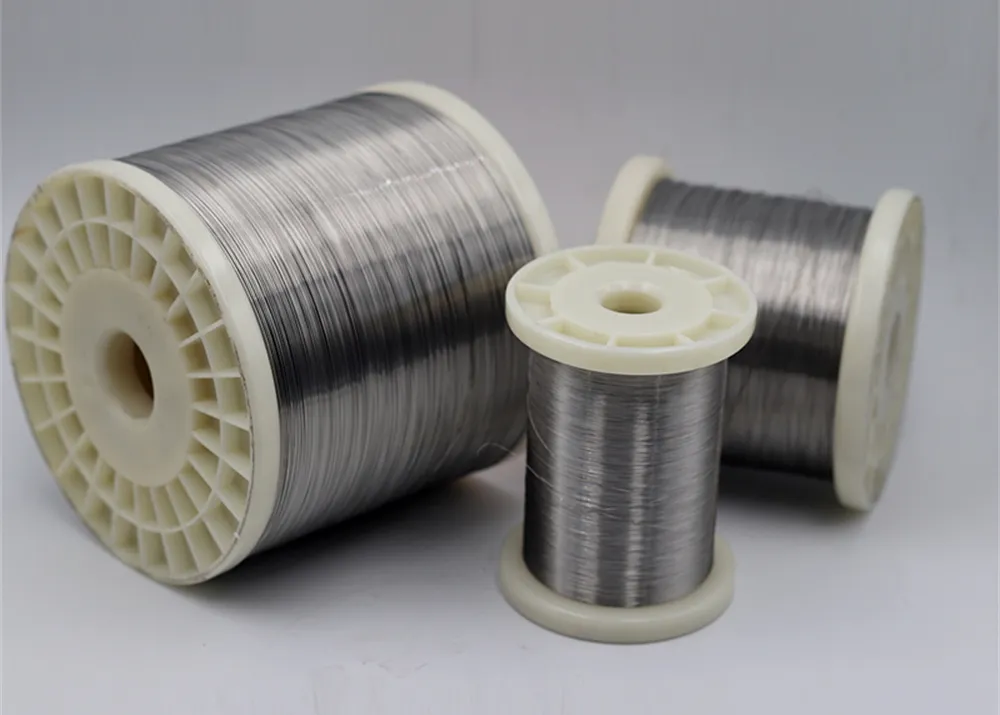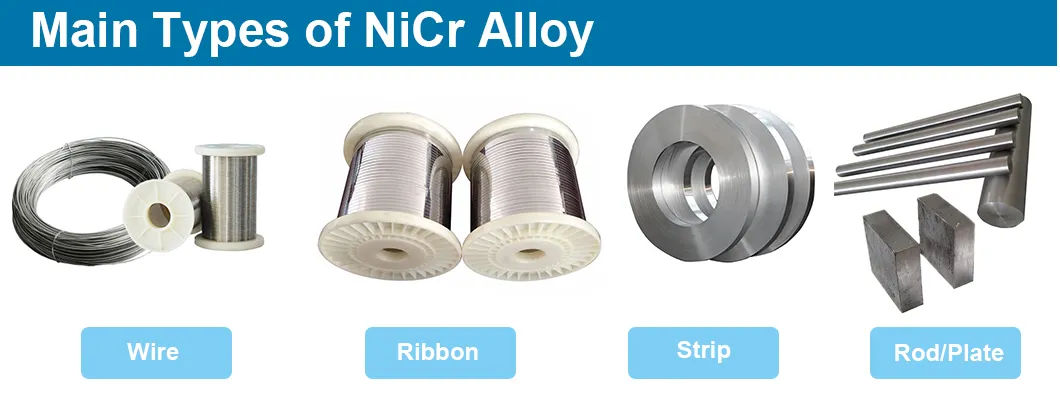Heating Cr20Ni80 Element 3000W AC 220V Resistance Coil Nichrome Resistance Wire For Furnace
The material NiCr8020 with the material number 2.4869 is applied in the form of strips, sheets, tubes and wires for furnace construction components and heating conductors. This is a unique nickel-chromium heating conductor alloy, engineered to function optimally at operating temperatures reaching up to 1150 °C. Distinctively, it often incorporates additives of rare earth elements. These additives significantly enhance its oxidation resistance, particularly in scenarios involving frequent on-off switching operations or substantial temperature fluctuations.
Exhibiting remarkable atmospheric corrosion resistance at 20 °C, this alloy maintains a high level of resistance to air and various oxygen-rich gases throughout its operational temperature range. It also demonstrates excellent resistance to nitrogen-based low-oxygen gases. However, it shows relatively low resistance when exposed to both oxidizing and reducing gases that contain sulfur.


| Chemical Composition and Propertes: | |
| Propertes/Grade | NiCr 80/20 | NiCr 70/30 | NiCr 60/15 | |
| Main Chemical Composition(%) | Ni | Bal. | Bal. | 55.0-61.0 | |
| Cr | 20.0-23.0 | 28.0-31.0 | 15.0-18.0 | |
| Fe | ≤ 1.0 | ≤ 1.0 | Bal. | |
| Max Working Temperature(ºC) | 1200 | 1250 | 1150 | |
| Resistivity at 20ºC(μ Ω · m) | 1.09 | 1.18 | 1.12 | |
| Density(g/cm3) | 8.4 | 8.1 | 8.2 | |
| Thermal Conductivity(KJ/m· h· ºC) | 60.3 | 45.2 | 45.2 | |
| Coefficient of Thermal Expansion(α × 10-6/ºC) | 18 | 17 | 17 | |
| Melting Point(ºC) | 1400 | 1380 | 1390 | |
| Elongation(%) | > 20 | > 20 | > 20 | |
| Micrographic Structure | austenite | austenite | austenite | |
| Magnetic Property | nonmagnetic | nonmagnetic | nonmagnetic | |
| | | | | | |
| Propertes/Grade | NiCr 35/20 | NiCr 30/20 | Karma | Evanohm |
| Main Chemical | Ni | 34.0-37.0 | 30.0-34.0 | Bal | Bal |
| Composition(%) | Cr | 18.0-21.0 | 18.0-21.0 | 19.0-21.5 | 19.0-21.5 |
| | Fe | Bal. | Bal. | 2.0-3.0 | - |
| Max Working Temperature(ºC) | 1100 | 1100 | 300 | 1400 |
| Resistivity at 20ºC | 1.04 | 1.04 | 1.33 | 1.33 |
| (μ Ω · m) |
| Density(g/cm3) | 7.9 | 7.9 | 8.1 | 8.1 |
| Thermal Conductivity | 43.8 | 43.8 | 46 | 46 |
| (KJ/m· h· ºC) |
| Coefficient of Thermal | 19 | 19 | - | - |
| Expansion(α × 10-6/ºC) |
| Melting Point(ºC) | 1390 | 1390 | 1400 | 1400 |
| Elongation(%) | > 20 | > 20 | > 20 | > 20 |
| Micrographic Structure | austenite | austenite | austenite | austenite |
| Magnetic Property | nonmagnetic | nonmagnetic | nonmagnetic | nonmagnetic |
Typical Mechanical properties(1.0mm)
- Elongation: 30%
- Yield Strength: 420Mpa
- Tensile Strength: 810Mpa
| Chemical Composition | Nickel 80%, Chrome 20% |
| Condition | Bright/Acid white/Oxidied Color |
| Diameter | 0.018mm~1.6mm in spool, 1.5mm-8mm packing in coil, 8~60mm in rod |
| Nichrome Round Wire | Diameter 0.018mm~10mm |
| Nichrome Ribbon | Width 5~0.5mm, thickness 0.01-2mm |
| Nichrome Strip | Width 450mm~1mm, thickness 0.001m~7mm |
| Diameter | 1.5mm-8mm packing in coil, 8~60mm in rod |
| Grade | Ni80Cr20, Ni70/30, Ni60Cr15, Ni60Cr23, Ni35Cr20Fe, |
| Ni30Cr20 Ni80, Ni70,Ni60, Ni40, |
| Advantage | The metallurgical structure of nichrome |
| confers them a very good plasticity when cold. |
| Characteristics | Stable performance; Anti-oxidation; Corrosion resistance; |
| High temperature stability; Excellent coilforming ability; |
| Uniform and beautiful surface condition without spots. |
| Usage | Resistance heating elements;Material in metallurgy, |
| Household appliances;Mechanical manufacturing and |
| other industries. |
| Resistance Wires |
| RW30 | W.Nr 1.4864 | Nickel 37%, Chrome 18%, Iron 45% |
| RW41 | UNS N07041 | Nickel 50%, Chrome 19%, Cobalt 11%, Molybdenum 10%, Titanium 3% |
| RW45 | W.Nr 2.0842 | Nickel 45%, Copper 55% |
| RW60 | W.Nr 2.4867 | Nickel 60%, Chrome 16%, Iron 24% |
| RW60 | UNS NO6004 | Nickel 60%, Chrome 16%, Iron 24% |
| RW80 | W.Nr 2.4869 | Nickel 80%, Chrome 20% |
| RW80 | UNS NO6003 | Nickel 80%, Chrome 20% |
| RW125 | W.Nr 1.4725 | Iron BAL, Chrome 19%, Aluminium 3% |
| RW145 | W.Nr 1.4767 | Iron BAL, Chrome 20%, Aluminium 5% |
| RW155 | | Iron BAL, Chrome 27%, Aluminium 7%, Molybdenum 2% |